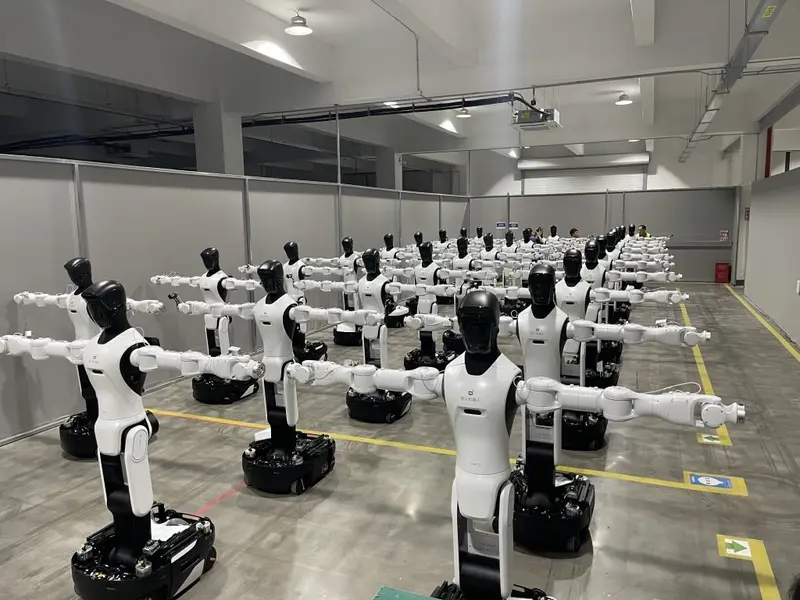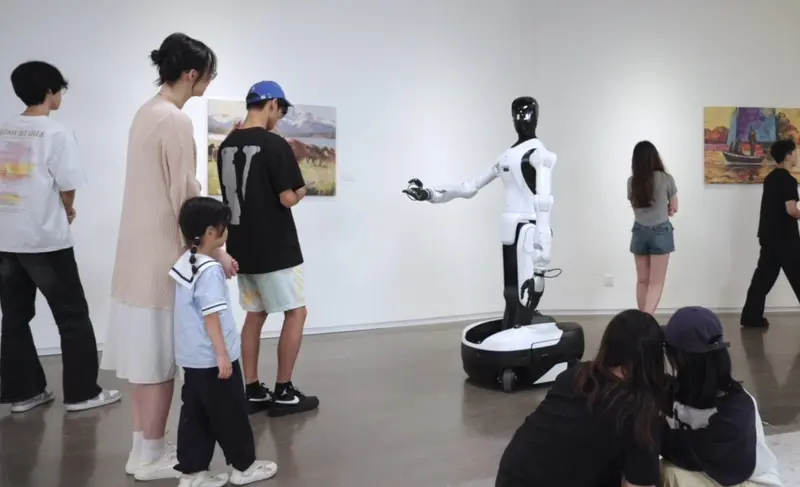- Published on
Agibot Launches G2, an Industrial Robot Aimed at Factories and Beyond

Agibot has officially launched its next-generation industrial robot, the Agibot G2, aiming to push beyond traditional single-task automation with a more versatile, AI-driven platform. The company positions the G2 as an "industrial-grade interactive embodied robot" designed for a range of applications, including complex manufacturing, logistics, and even public-facing roles like providing guided tours.
The launch is supported by significant commercial traction, with reports of secured orders totaling hundreds of millions of RMB. This includes a major contract with automotive supplier Joyson Electronic, where the G2 is being deployed in auto parts manufacturing. This initial commercial success suggests a market appetite for more flexible robotic systems.
Built for the Factory Floor
As an upgrade to a model released in late 2023, the G2 is built with industrial environments in mind. It has undergone over 130 component tests, including operation in extreme temperatures from -15°C to 50°C. To meet the demands of continuous factory work, the robot features a dual-battery hot-swappable design and can perform autonomous charging, enabling 24/7 operation.
Key to its physical capabilities is a design that mimics human-like dexterity. A 3-degree-of-freedom waist allows the robot to bend, twist, and sway, while its mobility platform is designed to navigate over 95% of typical factory floor conditions.
A standout feature is what Agibot calls the "world's first cross-shaped wrist force-controlled arm". The entire arm is equipped with high-precision torque sensors that detect external forces in real-time. This allows the robot to perform delicate tasks using impedance control, a capability demonstrated by having the arm pushed with a raw egg without breaking it.

AI-Powered Versatility
The G2's hardware is powered by an onboard AI system designed to handle complex and long-sequence tasks. The system runs on Agibot's proprietary large models: GO-1 for perception and planning, and GE-1, a world model that allows the robot to "rehearse" actions in a simulated environment before execution.
This AI architecture, described as a "3-layer brain," enables the robot to understand a single command and execute the entire corresponding task. All of this is processed locally on an NVIDIA Jetson Thor T5000, which provides up to 2070 TFLOPS of compute power. This allows the G2 to run large-scale AI models directly on the device with a reported latency of under 10 milliseconds, crucial for real-time interaction and decision-making. This workflow, where models are trained in virtual simulations before being deployed to physical robots, is intended to reduce trial-and-error costs and speed up implementation.
From Demos to Deployment
Agibot showcased the G2's capabilities across four distinct scenarios:
- Auto Parts Production: Collaborating with human workers on tasks like seatbelt lock cylinder assembly and material handling.
- Precision Manufacturing: The robot used reinforcement learning to master the delicate task of inserting RAM sticks into a motherboard in just one hour.
- Logistics: Equipped with Agibot's "OmniHand," the G2 demonstrated its ability to grasp and sort parcels of various sizes and materials.
- Guided Tours: In a commercial setting, the G2 used its human-like body language and 360-degree sensors to provide engaging and safe guided tours in an art museum.
A separate demonstration at the launch event highlighted the robot's low-latency teleoperation, with an operator in Beijing remotely controlling a G2 in Shanghai to precisely hit a floating balloon.
Context and Questions
The Agibot G2 enters a competitive market focused on bringing more intelligent, general-purpose robots into the workforce. The company's stated goal is to relieve humans from "repetitive, labor-intensive, and safety-risk prone work," allowing people to focus on more creative tasks.
While the technical specifications and initial sales are promising, the long-term success of the G2 will depend on its real-world performance and reliability. The promise of a "rapid deployment toolchain" that allows non-professionals to set up the robot is a key selling point, but its practical ease of use remains to be seen. With deployments beginning in demanding sectors like automotive manufacturing and consumer electronics, the industry will be watching to see if the Agibot G2 can translate its impressive demonstrations into sustained, scalable value on the factory floor and beyond.
AgiBot’s new generation of industrial-grade interactive embodied robot, AgiBot G2, has officially launched! The G2 has already secured orders worth hundreds of millions of RMB, including two separate contracts each exceeding 100 million RMB, and has begun its first commercial
AgiBot has launched its full product line on JD.com and its own mall, a move aimed at accelerating commercialization. ► The most affordable robot is the Lingxi X2 Youth Edition, priced at ¥98k. ► The Expedition A2 Youth Edition is on promo for ¥168k. This
Share this article
Stay Ahead in Humanoid Robotics
Get the latest developments, breakthroughs, and insights in humanoid robotics — delivered straight to your inbox.